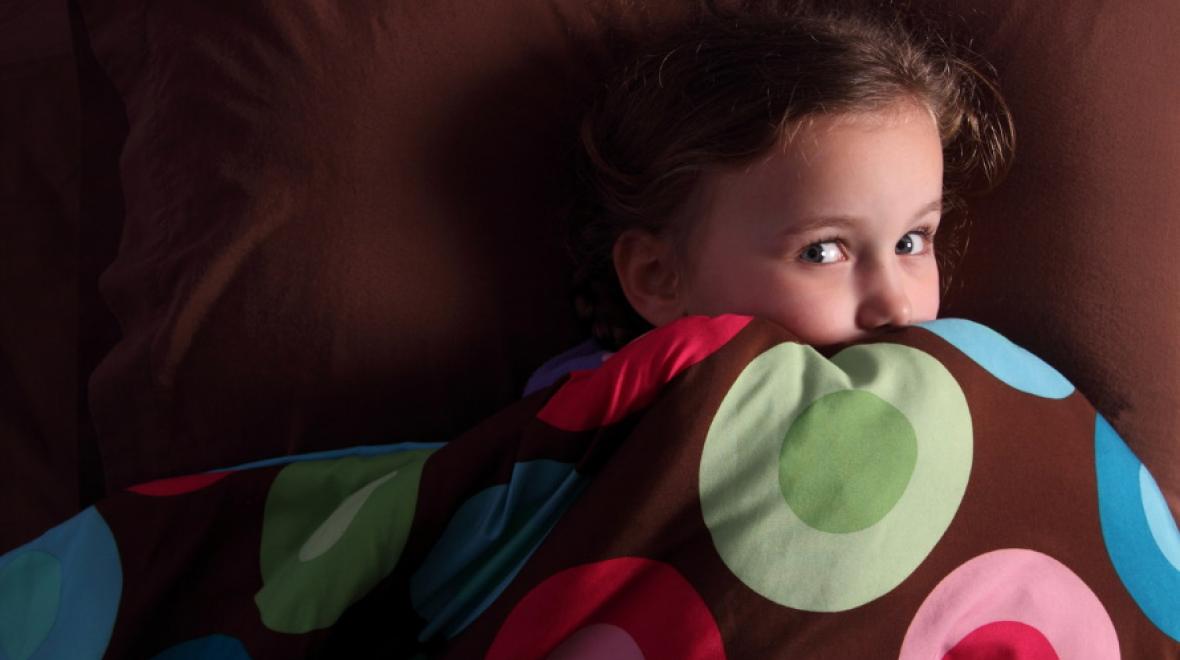
When my son was in preschool, he experienced night terrors. At first, I thought he was having nightmares. But I quickly learned that what he was experiencing was different. He would sit up in bed with his eyes wide open and scream with fear. After the first few times this happened, I realized he was not awake. Sometimes, he would sleepwalk and try to pick up things that were not there, all while crying inconsolably. As a parent, night terrors are frightening and confusing to witness. So I decided to get some expert advice about nightmares, and night terrors.
Knowing the difference
“Nightmares and night terrors are two totally different things with different causes. But it’s easy for parents to confuse them,” explains Dr. Maida Lynn Chen, director of the Pediatric Sleep Disorders Center at Seattle Children’s Hospital.
“Night terrors are episodes when a kid’s brain is totally asleep, but their body is awake, so they scream, but when they wake up, they have no recollection of the event,” Chen says. “Nightmares are dreams that occur in REM sleep, and kids have vivid recall of those dreams,” she explains.
According to Chen, night terrors almost always happen in the first third of the night and children need to be in extremely deep sleep to experience a night terror. So, one of the triggers for night terrors is anything that promotes a misalignment between body and brain, such as sleep deprivation.
To the contrary, nightmares typically happen in the last third of the night, according to Chen, because this is when most people experience rapid eye movement (REM) sleep. This is when brain activity increases and when children do most of their dreaming.
“Upon waking, children are able to remember a nightmare, but they have no memory of night terrors,” Chen says, so, making note of the time of night the episode occurred, and talking with your child the next morning can help parents understand if their child is experiencing nightmares or night terrors.
What is feeding their dreams?
To find out what is underneath a nightmare, listen to your child. Chen recommends meeting the child at the stage they are. “If you have a child whose imagination and reality is quite blurry, parents can often help the child be less scared by using something they can relate to, such as ‘monster spray,’ before the child goes to sleep.” Chen also recommends parents pay close attention to what the child sees throughout the day. “If your kid is having vivid nightmares, be cognizant about monitoring the media they are watching during the day to make sure it is age-appropriate.”
Chen says most children will outgrow nightmares, and they are a normal reflection of childhood developmental stages. Having nightmares is not necessarily a reflection that something bad is happening in the child’s life. Chen suggests parents have a planned, soothing response for when a child has a nightmare, and she encourages parents to remember that children will be scared if their parent is scared, so showing calm and reassurance will help the child feel safe and be able to go back to sleep.
Night terrors are less common
According to the American Academy of Sleep Medicine, only 1 to 6.5 percent of children experience night terrors, and genetic factors may play a role. Most night terrors last about 10 minutes, but they can continue for up to 40 minutes. Although the child may open their eyes and appear to be intensely afraid of someone or something in the room, children are not responsive when parents try to provide comfort because the child is not awake. They may even attempt to fight or escape, causing accidental injury to themselves.
Arianna Gervasio is a West Seattle mother whose five-year-old daughter has experienced night terrors. Gervasio consulted with her daughter’s pediatrician who recommended an overnight sleep study. They realized the night terrors were happening between midnight and 1:00 am, so the pediatrician recommended that just before midnight, Gervasio rouse her daughter from deep sleep, not enough to wake her completely, but enough to keep her daughter from sleeping deeply.
“It was hard. I had to stay up, or set an alarm, but it was the only thing that worked,” Gervasio explained. The Gervasio’s also installed a lock on the outside of their daughter’s bedroom door because she sometimes sleepwalks while having a night terror, and they were concerned about her possibly falling down the stairs. Chen says safety is the top concern for children who have night terrors. She supports using a lock on the outside of the bedroom door in homes with stairs and also recommends parents make sure windows are locked and that there is no clutter on the floor.
Chen advises parents to remain calm and remember that the child will not remember the night terror, but they can remember being awakened and having an incredibly frightened parent in front of them — and that can be scary. The best thing parents can do is to not wake the child. Instead, gently coax them back to bed, and know that the night terror episode will soon pass.
You might also like: |











